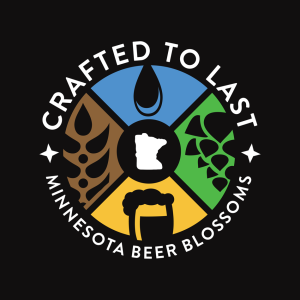Its A Documentary
 Early on, my main purpose was simply to capture the initial phases of the social and economic impacts of reformed beer distribution laws in Minnesota. I was not yet certain what form the finished video would take, but I knew that the sooner we got the cameras running, the better. Production began in January 2012, by April of that year it had become clear that I was making a movie, and by June the working title was Crafted to Last.
Early on, my main purpose was simply to capture the initial phases of the social and economic impacts of reformed beer distribution laws in Minnesota. I was not yet certain what form the finished video would take, but I knew that the sooner we got the cameras running, the better. Production began in January 2012, by April of that year it had become clear that I was making a movie, and by June the working title was Crafted to Last.
I wanted the film to reflect the kinetic tension that was surging through the brewing community in the wake of the newly enacted Surly Pint Law. Everywhere I looked around the MN beer scene, something was being built, expanded or improved and everyone had quite a few opinions about all of it.
The ideas was to create a film that looked as though all I did was set up the cameras and turn them on. I thought that this approach would underscore the growth in the brewing sector because it implies that the blossoming of Minnesota brewing could be captured in real time; as if it were happening right before our eyes. Which is, in fact, precisely where and when this film happened.
The conversational setting for the audio narration track of the film imparted a similar sense because it let the people in the film narrate with their own words. Because the featured speakers are talking to each other the audio track could be fashioned as one extensive and winding conversation. It tells a lot of stories and weaves them into a larger scale narrative about what happened when beer distribution laws changed in 2012 and what it meant for Minnesota brewing.
The first conversation segment was shot in the tasting lounge at Harriet Brewing Company on March 30, 2012. Location shoots at Olvalde Farm (April 29), Leech Lake (May 19) and Brau Bros Brewery in Lucan (June 3) followed and the ball was rolling. My initial goal was to recruit 4-6 breweries to the project and include 2-3 local businesses that had benefited from the emergence of craft brewing in Minnesota. The conversation with Russ Henry from Giving Tree Gardens and Paul Johnston, then with Harriet Brewing had already been shot and edited. It was time to celebrate, so I cracked this bottle of 15.
That the video diary clip celebrates the 4th conversation segment is significant. Not only because I thought 4 breweries was enough to make a movie, but also because the entire film was designed around the numbers 3 and 4. Specifically in terms of the alchemical equation so often remembered as the Axiom of Maria. Carl Jung found this narrative structure, along with many others, in virtually every single text he analyzed. He looked at that result and made conclusions about human psychology. I looked at the result and understood something about narrative structures that attract human beings to the story being told.

Comments are Closed